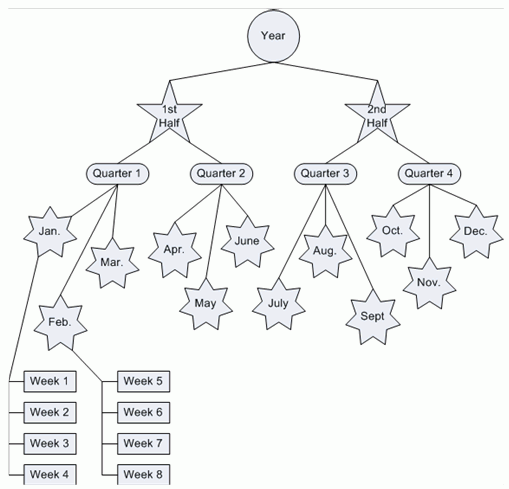Time Periods
Time periods in Labor Budgeting are hierarchical. The initial level of granularity is one week. By default, each year is divided into quarters, months and weeks. Each quarter has three months, and each month has either four or five weeks.
You can also create two semi-annual fiscal periods: first half period and second half period.
A fiscal year has the following time periods:
| Time Period | Number of Records | Parent Period |
|---|---|---|
| Year | 1 | Year |
| Semi-annual (Optional) | 2 | Year |
| Quarters | 4 |
|
| Months | 12 | Quarter |
| Weeks | 52 (or 53) | Month |
| Total | 69 (or 70) |
The following diagram depicts the fiscal time periods, including semi-annual time periods:

Each time period has a start date, an end date, and a parent period.
- The highest time period is the root time period.
- A time period located one level above its children is a parent time period.
- A time period with no children is a leaf time period.